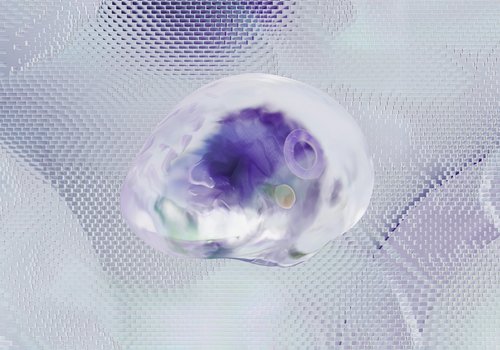
Vision and Concept of Liquid Democracy

Vision and concept
Liquid Democracy is a concept for liquefying the rigid structures of representative democracy. But what does it mean exactly? Liquid Democracy aims at three essential improvements of representative democracy:
- Citizens should be able to participate at any time, and not only in elections every few years.
- It should be possible for citizens to decide whether and in what form they want to participate in political decision-making processes.
- The development of solutions and the voting on them should be open to all citizens, not only to politicians and organized interest groups.
The goal of Liquid Democracy is to create a greater number of and more flexible participation opportunities for all citizens. Liquid Democracy is therefore not a concept of government that is intended to replace representative democracy. It is about expanding the system of representative democracy to include more direct democracy. Five core elements are necessary to liquefy the rigid structures of democracy.
1 / Public discourse
Political discourse must be designed in such a way that as many people as possible can participate in it. Discussions must be equal in the sense of the deliberative ideal (read more here). Moderation should activate and structure the discussion. Moderation does not precede the discussion. Central is the structured exchange of opinions and the joint discussion of possible solutions.
2 / Free choice of participation levels
Citizens should be able to decide for themselves on which topic they would like to participate and in what way. Depending on a person's values, interests and time, they can inform themselves about a topic, discuss it, work out proposals, appoint a representative for the topic, make themselves available as a representative or vote.
3 / Dynamic change between representation and direct participation
The internet makes it technically and organizationally possible for political voting processes to take place on an issue-by-issue basis instead of only passing on one's own vote bundled for all issues to a party or delegate every few years. In addition, digital platforms can be used to dynamically delegate a vote, so that citizens can vote for each issue themselves, delegate their vote, or be available as delegates themselves.
4 / Integration of civil society engagement
Liquid Democracy offers new channels for integrating the engagement that already exists in civil society into the democratic process. The focus on issue-based participation helps civil society to contribute its expertise more directly. Liquid Democracy also makes it possible to open up political participation processes within organizations to non-members.
5 / Comibination with offline participation
Liquid Democracy extends the existing processes of representative democracy. Therefore, in addition to the digitization of political decision-making processes, digital steps must be seamlessly linked with non-digital participation steps. This is the only way to integrate different target groups into political decision-making processes and ensure transparency throughout the entire process.

Compared to concepts developed in web forums in the early 2000s, the Liquid Democracy concept of Liquid Democracy e.V. involves more than just the improvement of voting processes through delegated voting. It is about opening up the entire political process, from agenda setting to the development of solutions to voting. For us as Liquid Democracy e.V., however, another important part of the concept is the concrete implementation in practice.
Implementation of Liquid Democracy
For the implementation of Liquid Democracy and its goals, the internet and digital communication are central. Because with the right digital platforms it is possible for the first time to make democratic co-determination accessible and organized for all people in a society. To put Liquid Democracy into practice, two aspects are very important, which are briefly explained below.
Open source software
The implementation of new forms of public discourse in the sense of Liquid Democracy needs digital platforms that are accessible to all, usable and comprehensible in their functioning. In order to meet the high demands for transparency and equal dialog on the platforms, the programming code of the platform must be openly accessible, freely usable and adaptable (open source). In Germany, there are two software solutions built specifically for the implementation of Liquid Democracy: Liquid Feedback from Interaktive Demokratie e.V. and Adhocracy, the software from us, Liquid Democracy e.V.
Connection to society and politics
In addition to the digital elements, Liquid Democracy needs to effectively connect with political structures and societal processes in order to achieve a change in democracy. This requires innovative concepts and changes in all areas of society especially in the classical institutions of representative democracy. One concept to better connect parliamentary processes with direct participation is “Direct Parliamentarism”, which was developed by Liquid Democracy e.V. in 2009 (more in this video). But since Liquid Democracy is not a concept of government, but aims at democratizing all areas of life, more direct co-determination possibilities have to spread into all areas of society, especially schools, politicas parties, NGOs and work contexts. Liquid Democracy e.V. has been working on such concepts and practical projects since its foundation – together with many other initiatives and organizations in the field of digital democracy.
Last updated: 23.2.2021
Sources and literature
A list of further links and texts on the vision and concept of Liquid Democracy can be found here.
- Adler, Anja. Liquid Democracy in Germany: on the future of digital political decision-making after the demise of the Pirate Party. Transcript Verlag, 2018.
- Ford, Bryan. "Delegative Democracy Revisited." Bryan Ford's Home Page, 2014, bford.info/2014/11/16/deleg.html. last accessed 2/16/2021.
- Paetsch, Jennifer / Reichert, Daniel "Liquid Democracy: New Ways of Political Participation." Operations 4 (2012): 15-22.
- Paetsch, Jennifer / Reichert, Daniel. "Harnessing Potential with Liquid Democracy." Digital Politics Mediation. Springer VS, Wiesbaden, 2015. 499-515.
- Panek, Eva / Bolwin, Charlotte "Trendsetting Development: The Standardization of e-Participation Processes. "The Digital Public Sphere. How the Internet is Changing Our Democracy, vol. II, 2015. 51-56.
- Reichert, Daniel / Panek, Eva. "Everything is in flux-the fluid layers of a liquid democracy." Internet and Participation. Springer VS, Wiesbaden, 2014. 299-310.


